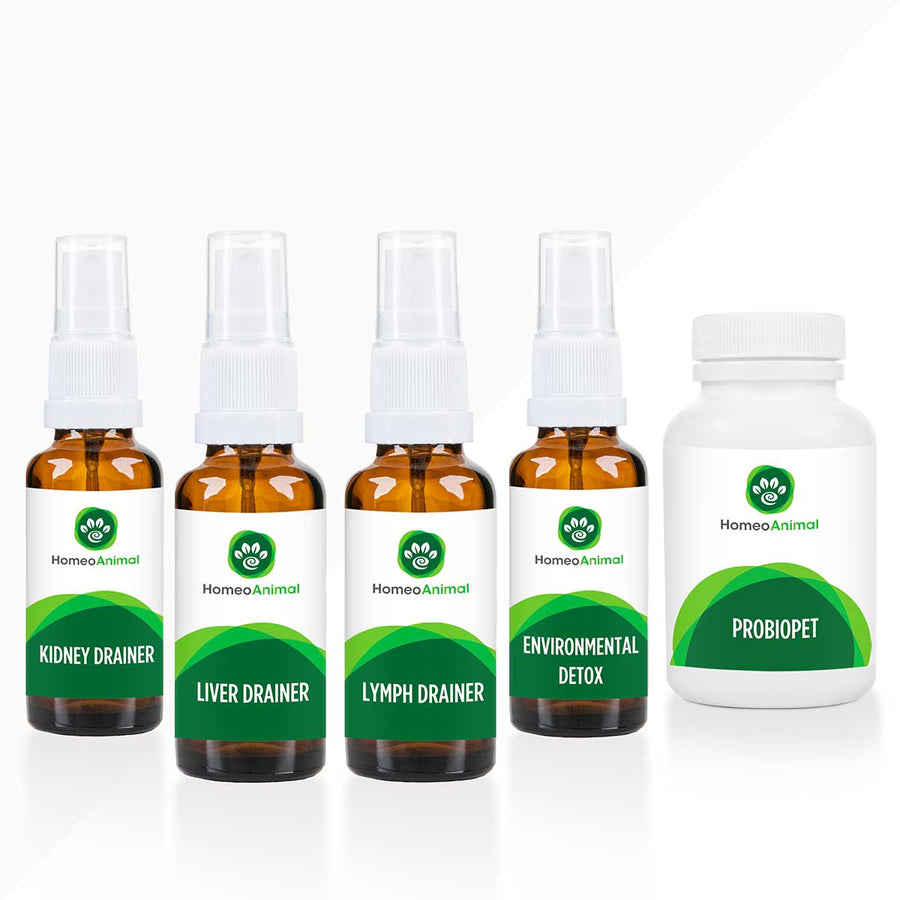Vet Insights: Can Ringworm in Dogs Be Passed to Humans?
Dog ringworm can appear suddenly and without warning. While it's well-known that this condition spreads between pets, many dog owners wonder—can ringworm also be transmitted to humans?
In this article, you’ll discover everything you need to know about canine ringworm, including common symptoms, home remedies, prevention tips, and expert insights to help protect your dog and your household.
What Exactly is Ringworm in Dogs?

Ringworm in dogs, also known as dermatophytosis, is a common fungal infection that affects the skin, hair, and occasionally the nails. Despite its name, it’s not caused by a worm, and it’s highly contagious, posing a risk to other pets.
This health problem affects the outer layers of a dog’s skin and hair follicles. Although the name comes from the red, circular rash in humans and some animals, dogs typically display different symptoms, such as hair loss, scaly patches, or irritated skin.
Ringworm in dogs is caused by a group of fungi known as dermatophytes. The most common species include Microsporum canis (responsible for roughly 70% of cases), Microsporum gypseum (around 20%), and Trichophyton mentagrophytes (about 10%).
These fungi thrive on dead skin cells and hair, making dogs susceptible to infection, especially in warm, humid environments.
Is Ringworm Contagious to Humans?
Ringworm is a zoonotic fungal infection, meaning it can be passed from dogs to humans. It typically spreads through direct contact with an infected pet or by touching contaminated surfaces such as bedding, brushes, or furniture.
Individuals with compromised immune systems, young children, and seniors are more susceptible to ringworm infections. In humans, it often presents as a red, itchy, ring-shaped rash. If you think you’ve been exposed through your dog, seek medical advice promptly for proper diagnosis and treatment.
How Do Dogs Contract Ringworm?
Ringworm spreads easily through direct contact with fungal spores, which can be transmitted in several ways:
- Direct contact with an infected animal: Dogs, cats, and other species can carry and transmit the fungus through skin-to-skin contact.
- Exposure to contaminated items or environments: Fungal spores can linger on bedding, grooming tools (like brushes or clippers), food and water bowls, carpets, and furniture where infected hair or skin cells are present.
- Contact with infected soil: Some species, such as Microsporum gypseum, live in soil. Dogs can become infected by digging or lying in contaminated areas.
Ringworm fungal spores are remarkably resilient and can survive in the environment for long periods, sometimes up to 18 months, making thorough cleaning and disinfection essential to prevent reinfection.
Dogs with weakened immune systems, including young puppies, are at greater risk for developing ringworm. Breeds like Yorkshire Terriers, Boston Terriers, and Russell Terriers may also be genetically more prone to this fungal infection.
Existing skin conditions or wounds can further increase susceptibility by allowing fungal spores to penetrate more easily.
Recognizing the Signs of Ringworm in Dogs
Ringworm in dogs may not always appear as a classic “ring” like it does in humans. Instead, it often presents signs such as hair loss, scaly skin, and itching. The following are its most common indicators:
- Patchy or circular hair loss (alopecia) that may gradually expand
- Broken hairs around the edges of the affected areas
- Red, raised, or inflamed skin lesions
- Dry, scaly skin or dandruff-like flakes in the coat
- Crusting or scabbing on irritated skin
- Thickened, reddened skin in advanced cases
While ringworm in dogs isn’t always itchy, some cases may involve mild to moderate itchiness (pruritus). The infection can also affect the nails, leading to brittleness, thickening, or abnormal nail growth.
Ringworm in dogs most commonly affects the face, ear tips, tail, and feet. However, lesions can develop anywhere on the body, making early detection and treatment essential.
How Do Veterinarians Diagnose Ringworm?

Diagnosing ringworm in dogs often involves multiple methods, including a physical exam, fungal culture, Wood’s lamp inspection, and microscopic analysis of hair or skin samples. In the following section, we’ll look at these diagnostic tools.
- PCR (Polymerase Chain Reaction) Test: Detects fungal DNA quickly, often faster than cultures. Best used for initial diagnosis, but not for monitoring treatment, as it can’t distinguish between live and dead fungi.
- Wood’s Lamp examination: Uses ultraviolet light to detect yellow-green fluorescence on hairs infected with Microsporum canis. While quick and non-invasive, it isn’t definitive, as not all fungi are fluorescent.
- Microscopic examination: Involves examining plucked hairs or skin scrapings under a microscope for fungal spores attached to the hair shaft. Offers immediate, though sometimes less conclusive, results.
- Fungal Culture (DTM – Dermatophyte Test Medium): Widely regarded as the gold standard for diagnosing ringworm in dogs. Skin and hair samples are applied to a nutrient-rich medium that changes color and promotes the growth of dermatophyte fungi. While early signs may appear within days, a definitive result can take up to several weeks.
- Visual examination: Veterinarians assess the skin and coat for telltale signs of ringworm, such as circular lesions, scaling, and hair loss.
- Skin biopsy: Typically reserved for unusual or difficult-to-diagnose cases, a skin biopsy involves collecting a small tissue sample for microscopic examination. This allows veterinarians to directly identify fungal organisms embedded within the skin layers.
Conventional Treatment Strategies for Ringworm in Dogs
Effective ringworm treatment in dogs requires addressing the infection, cleaning the environment thoroughly, and limiting the dog’s contact with others if needed. Boosting their immune system is also important in treating the condition. A veterinarian can provide a customized treatment plan to ensure complete recovery and prevent reinfection.
Ringworm treatment in dogs often lasts several weeks to months, and it’s important to follow the full course prescribed by your veterinarian, even if symptoms appear to improve. Ending treatment too soon can result in a relapse and prolong the infection.
- Topical antifungal creams and ointments: Applied directly to affected areas, these treatments often contain miconazole or terbinafine and are ideal for localized lesions, especially in hard-to-bathe spots.
- Medicated shampoos and rinses: Used to treat the entire coat, these antifungal shampoos typically contain miconazole, enilconazole, or chlorhexidine. Most are applied twice weekly to reduce fungal spread.
- Oral antifungal medications: Essential for widespread or persistent infections, systemic treatments include itraconazole, terbinafine, fluconazole, and occasionally griseofulvin. These are often used alongside topical treatments for best results.
- Antifungal dips (e.g., lime sulfur dips): Very effective against ringworm, though they can stain clothing and have a strong odor. Often used in severe cases or shelter settings.
Home Solutions for Canine Ringworm
While conventional treatment is important for managing ringworm in dogs, home care, particularly environmental decontamination, plays a vital supporting role. Removing fungal spores from your dog’s surroundings helps prevent reinfection and limits the spread to other pets or humans.
Vacuum all areas your dog has access to—including under furniture—to eliminate lingering fungal spores. Immediately discard vacuum contents and follow up by cleaning surfaces with an effective, pet-safe disinfectant.
Disinfect hard surfaces using a 1:10 diluted bleach solution, but only where it's safe and appropriate. Wash your dog’s bedding and other washable items in hot water, adding bleach when possible, to help eliminate lingering fungal spores.
During treatment, it’s best to confine your dog to areas with hard, easy-to-clean surfaces like tile floors. This helps limit the spread of fungal spores and makes daily cleaning more effective.
In some cases, your veterinarian or pet homeopathy expert may recommend clipping the hair around ringworm lesions to improve the effectiveness of topical treatments. For long-haired breeds, a full-body trim may help reduce environmental contamination. However, avoid shaving too closely, as it can irritate the skin and worsen the condition.
Quarantining your dog during ringworm treatment helps prevent the spread to other pets and people. Extra caution should be taken around children, seniors, or anyone with a weakened immune system.
SKIN AT PEACE
Zumalka’s SKIN AT PEACE is a natural homeopathic remedy formulated to support healthy, balanced skin in pets. Its premium ingredients help soothe discomfort from dryness, itching, and rashes, promoting overall skin wellness.
SILVERPET
Zumalka’s SILVERPET is a colloidal silver-based product designed to support your pet’s natural defenses and overall wellness. It can be used internally or externally as a gentle option to help maintain a clean and balanced environment for healing.
Always consult your veterinarian or a qualified pet homeopathy specialist before using any over-the-counter or home remedies. Proper guidance ensures safe, effective treatment and helps avoid complications or delayed healing.
Is It Possible to Prevent Ringworm in Dogs?

Yes, canine ringworm, also known as dermatophytosis, is a common but preventable skin infection in dogs.
Preventing ringworm in dogs starts with consistent hygiene and reducing exposure to fungal sources. Regular cleaning, proper grooming, and avoiding contact with infected animals can significantly lower the risk of infection. Here are additional tips to help keep your dog ringworm-free:
- Disinfect common areas where your pet spends time to reduce fungal contamination.
- Dispose of shed hair from grooming brushes promptly to avoid spreading spores.
- Isolate new pets and have them examined by a veterinarian before introducing them to your household.
- Avoid contact with infected animals to reduce the risk of transmission.
- Vacuum frequently to remove pet hair and skin flakes that may carry spores.
- Wash bedding and grooming tools regularly with hot water and pet-safe disinfectants.
- Be cautious in areas with contaminated soil, especially if your dog enjoys digging.
Maintaining your dog’s overall health and a strong immune system plays a vital role in preventing ringworm infections. A balanced diet, consistent exercise, routine veterinary care, and guidance from a pet homeopathy specialist can all support your dog’s natural ability to fight off infection.
FAQs
How do you know if your dog has ringworm?
Signs of ringworm in dogs include circular hair loss, scaly or crusty skin, redness, and itching. Diagnosis requires veterinary testing, and consulting a pet homeopathy specialist can support a holistic recovery approach.
Can humans catch ringworm from dogs?
Yes, humans can get ringworm from dogs, as it’s a zoonotic fungal infection. It spreads through direct contact or contaminated surfaces, so maintaining good hygiene and treating infected pets promptly is key to prevention.
What cures dog ringworm fast?
Fast ringworm treatment involves antifungal creams, medicated shampoos, or oral medications prescribed by a veterinarian. Consulting a pet homeopathy specialist can also help. Early diagnosis, consistent treatment, and environmental decontamination are key to speeding up recovery and preventing reinfection.
Can my dog sleep with me if he has ringworm?
It's best to avoid letting your dog sleep with you if they have ringworm. The infection is contagious to humans, so limiting close contact and following your vet’s treatment and hygiene guidelines is essential.
What kills ringworm on dogs?
Ringworm in dogs is treated with antifungal creams, medicated shampoos, oral medications, and environmental cleaning. Veterinary-prescribed treatments effectively kill the fungus and prevent its spread to other pets or humans. Premium natural products like SKIN AT PEACE and SILVERPET can also help.
Will dog ringworm go away by itself?
Dog ringworm may eventually resolve on its own, but this can take months and risk spreading to other pets or humans. Prompt veterinary treatment is strongly recommended to speed recovery and prevent reinfection. Using high-quality natural products is also beneficial.
Can I wash my dog if he has ringworm?
Yes, you can wash your dog if he has ringworm, using a vet-approved antifungal shampoo. Regular bathing helps reduce fungal spores, but always follow your veterinarian’s guidance for safe and effective treatment.
Can a dog licking you give you ringworm?
Yes, a dog with ringworm can potentially transmit the infection through licking if fungal spores are present on their skin or fur. Practicing good hygiene and avoiding close contact until treatment begins helps reduce the risk.
Key Takeaways
Ringworm is a highly contagious fungal infection, not an actual worm, that spreads easily to other pets and humans. In dogs, symptoms include circular hair loss, scaly skin patches, and sometimes brittle or damaged nails.
Diagnosing ringworm in dogs often involves a fungal culture, which remains the most reliable method. Treatment typically includes topical and, in some cases, oral antifungal medications, along with thorough cleaning of the pet’s environment.
It’s essential to complete the full course of treatment as directed by your veterinarian or pet homeopathy expert to ensure full recovery and prevent recurrence.
Proper hygiene and a clean living space play a crucial role in preventing ringworm outbreaks in dogs. Consistent cleaning and disinfecting reduce fungal spores, helping to stop the infection from spreading or returning.
If you suspect your dog has ringworm, seek prompt guidance from your veterinarian or a qualified pet homeopathy expert for proper diagnosis and treatment. Early care can ease discomfort, speed healing, and help prevent further spread.







Hi Sherry,
Thank you for pointing that out. Here is the correct link to request a free consultation: https://go.zumalka.com/free-consultation-for-your-pet
We’ve also updated in the link in the blog post to the correct one. We are here if you have any further questions !
link to the “Free Health Guidance Form” doesn’t work. Please let me know how I can fill out the form request.
Leave a comment